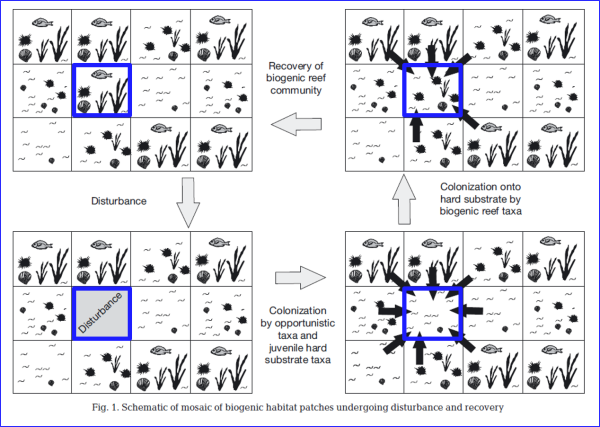Spatially explicit disturbance/recovery models are a cellular automaton that uses a mechanistic approach to investigate recovery rates of benthic species following disturbance events.
Complex interactions such as competition, facilitation, predation, density dependent growth as well as interactions to determine larvae settlement success are included.
Complex interactions such as competition, facilitation, predation, density dependent growth as well as interactions to determine larvae settlement success are included.
Model summary
At NIWA, we used the spatially explicit/recovery models to assess the vulnerability of the benthic communities to disturbances. To do this, we simulate various disturbance regimes at different temporal and spatial sizes (Lundquist et al. 2010).
References
Lundquist, C.J., Pritchard, M., Thrush, S.F., Hewitt, J.E., Greenfield, B. L., Halliday, J. , & Lohrer, A. M. 2013. Bottom disturbance and seafloor community dynamics: Development of a model of disturbance and recovery dynamics for marine benthic ecosystems. New Zealand Aquatic Environment and Biodiversity Report No. 118. [3 MB PDF]
Lundquist, C. J., Thrush, S. F., Coco, G. & Hewitt, J. E. 2010. Interactions between disturbance and dispersal reduce persistence thresholds in a benthic community. Marine Ecology Progress Series, 413, 217-228. [1.3 MB PDF]

